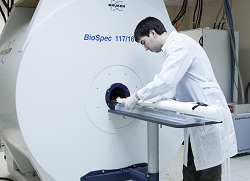Research Fields
Fields of research
Underlying the development of the IC&G was the idea to integrate molecular, cellular, developmental and population studies aiming at a better understanding of the genetic mechanisms of variability and evolution. Research emphasis was on the development of plant and animal models for investigating the genetic structure of complex, in functional terms, characters of behavior, stress reactivity, reproductive systems hereditary human and animal diseases, symbiotic nitrogen fixation in plants, among others.
Accordingly, the research of the IC&G is summmarized under three headings.
- The structural and functional organization of genetic material at the levels of the genome, chromosome, and gene. Reconstruction of the genome, transgenesis in plants and animals.
- The molecular-genetic and genetic-evolutionary bases of the functioning of physiological systems providing vital processes. Chromosome and gene diagnostics of inherited and multifactorial diseases.
- The genetic-evolutionary aspects of population biology and biodiversity. development of new methods of animal and plant genetics and breeding for efficient use of gene pools.
The IC&G hosts interlaboratory seminars on molecular genetics, animal genetics and physiological genetics, plant genetics to ensure expertise evaluation of reports, papers prepared for publication, dissertations. Each laboratory is assigned to participate in a particular seminar.
The IC&G holds annual report sessions of the Scientific Council at which work performed at each laboratory is reported in detail and anaylyzed in-depth.
Along with basic studies, the IC&G devoted much of its efforts to applied research . The number of developments that had immediate practical implications, that were protected by patents and inventor’s certificates increased to 48. The developments included producer strains, plant varieties and their hybrids, animal strains and lines, medicinal preparations, means for plant protection, biotechnology.



